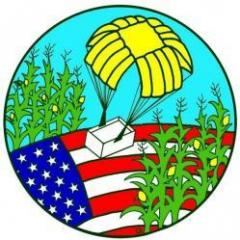I not a staticline instructer but is that legal. I herd a instructer say it had to hook the frame of the airplane.
Do it I got my camera.
UKD10873 0
Wrong Rupert,
It is nothing to do with the Parachuting authority, it is to do with the CAA or in the case of th US the FAA.
Most aircraft have nothing in their flight manual about static line parachuting, they have supplements regarding flight with the door removed etc and limitations associated with that type of operation.
Most aircraft manufacturers like Cessna will not endorse static line parachuting from their aircraft with something attached to the pilots seat like in some 182/185/206 set ups or on rows 2 and 3 seat belt attachments, mainy for the fear of liability after a failure. This is the reason here in the UK we have generic modifications that a former NCSO of the BPA put to the the CAA in the mid 70's and hence we have BPA minor mod 1 & 2 which are NOT aircraft specific. This was put into place after an incident where a whole aircraft was lowered to the ground under an iflated reserve after a hang up (an I24 I believe) where the static line was most probably looped around or attached the pilots seat!
Blue skies CSBabyI
Alan,
More ratings than I can be bothered posting unlike some children on here
It is nothing to do with the Parachuting authority, it is to do with the CAA or in the case of th US the FAA.
Most aircraft have nothing in their flight manual about static line parachuting, they have supplements regarding flight with the door removed etc and limitations associated with that type of operation.
Most aircraft manufacturers like Cessna will not endorse static line parachuting from their aircraft with something attached to the pilots seat like in some 182/185/206 set ups or on rows 2 and 3 seat belt attachments, mainy for the fear of liability after a failure. This is the reason here in the UK we have generic modifications that a former NCSO of the BPA put to the the CAA in the mid 70's and hence we have BPA minor mod 1 & 2 which are NOT aircraft specific. This was put into place after an incident where a whole aircraft was lowered to the ground under an iflated reserve after a hang up (an I24 I believe) where the static line was most probably looped around or attached the pilots seat!
Blue skies CSBabyI
Alan,
More ratings than I can be bothered posting unlike some children on here


I was wondering why it was bent.
-=-=-=-=-
Pull.